|
What to do? What to do? So I have this very large abstract watercolor painting started (see Part II), by pouring the background. But I had no idea where to go with it. Since Ruth's workshop was focused on abstract expressionism, what did I want to say, express, "feel" (boy, that's a hard word for me - feel!???). What to do when stuck on abstraction, drop Ruth a note. Evidently I wasn't the only one still stuck from the last workshop. She graciously offered to reconvene another workshop. As we met one-on-one trying to decide where to go with this painting, I mentioned how much I love the work of abstract landscape artist, Brian Rutenberg. He had an amazing exhibit at the Saginaw Museum of Art a few years ago. I went twice. The depth and sense of height he creates in his work is remarkable. The more you look the more you see. His book (and YouTube series), Clear Seeing Place, is so worth reading/seeing. It gives such insight into the artist process and life. So that was the direction I wanted to take - abstract landscape with lots of emotion or fireworks. As Ruth suggests, the next step is to start finding shapes. Rutenburg likes to represent trees has just vertical lines. So I tried that too, but I'm no Rutenburg. With the "trees", it began looking like there was water and a sunset. How surprising - well not really as that is what I love most. And so the shape-making process continued. Trees took shape and shadows. What about all the masked, saved whites? What the heck to do with that. The gang thought just leave them. But I decided to soften some and try to better connect both sides. Lessons Learned:
0 Comments
The journey into watercolor abstraction continued during Ruth Gilmore Lang's fall workshop. Unlike the previous painting (see Part 1), I wanted to pour all the colors concurrently, rather than wait between pours. In addition, Ruth encouraged me to go bigger yet. So out came a 32" x 40" aquaboard by Arches. That size is HUGE compared to my norm and comfort level!
I saved (mask) some whites. Then starting with premixed paint and a wet board, I began a semi-controlled pour of the paint - trying to react "intuitively" to the color choices, but consciously to it's placement. This layer, when dried, would become the underpainting (or background) of the painting. And so the semi-terrifying and adrenaline-rush pouring, tipping, hyper-ventilating blowing began. And then...I let it rest. The underpainting was done. And so was the workshop! Yikes, I had no idea where to go next besides home. Ruth - you can't leave me hanging like this. |
AuthorMary Murphy Archives
March 2019
Categories
All
|
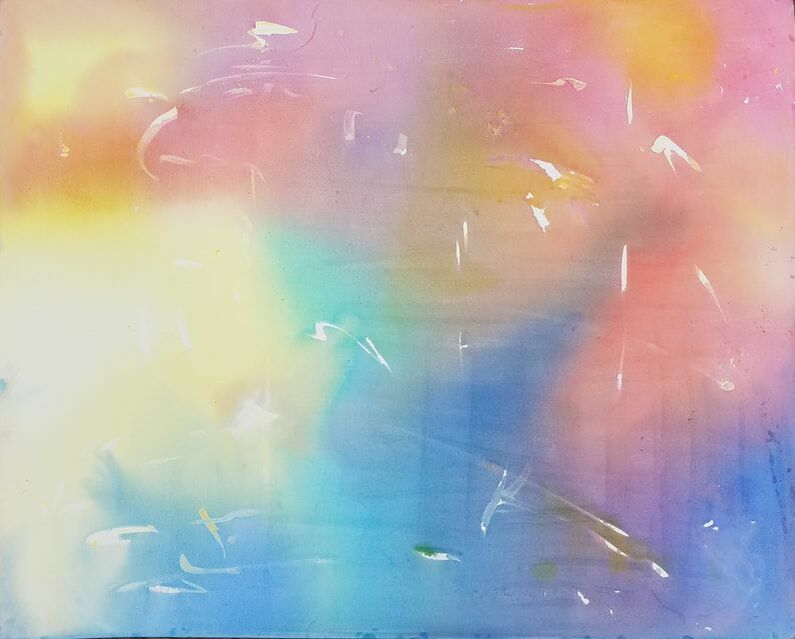
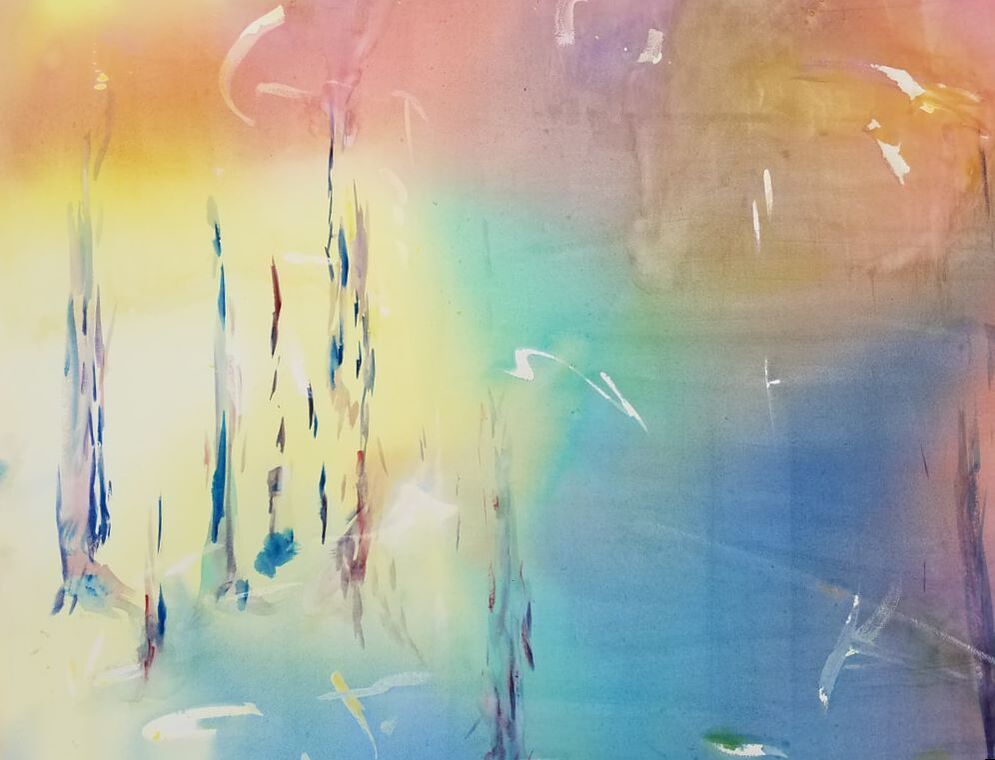
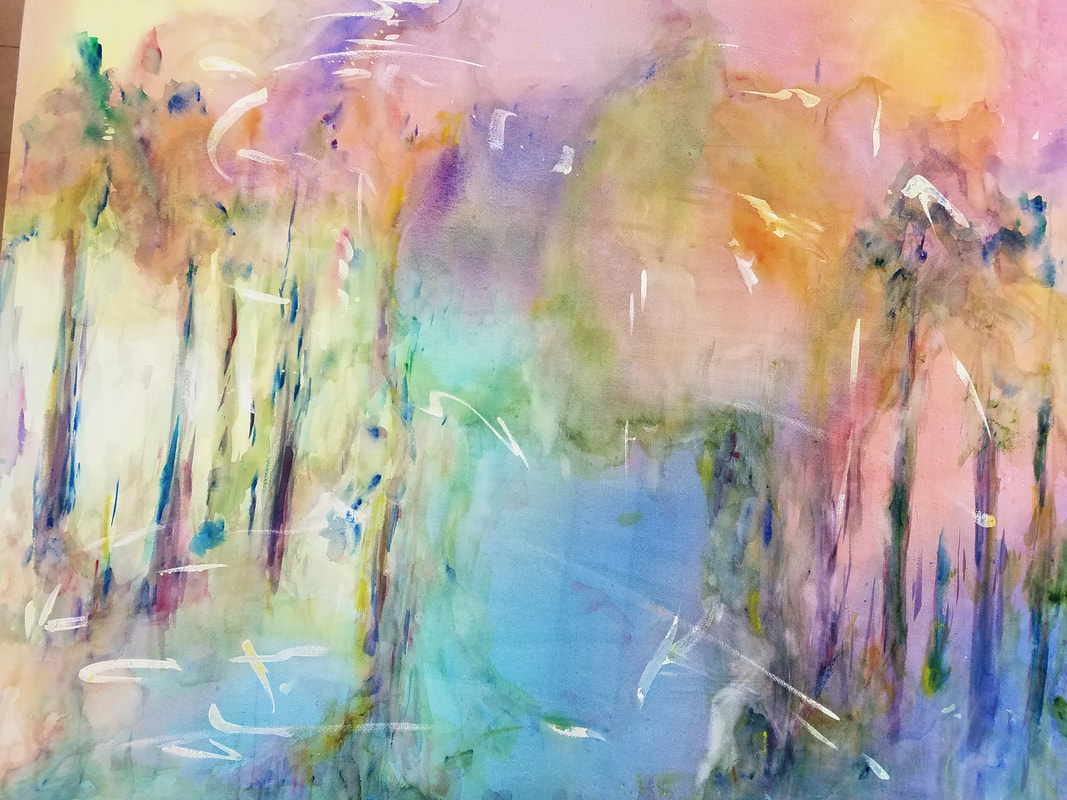
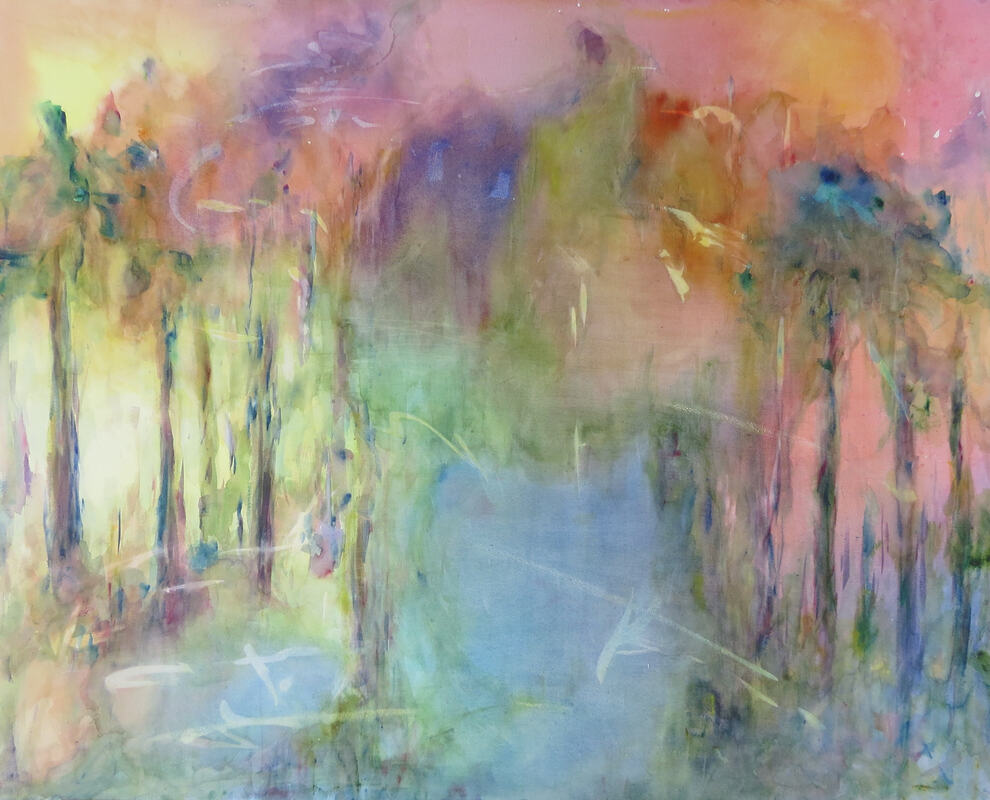
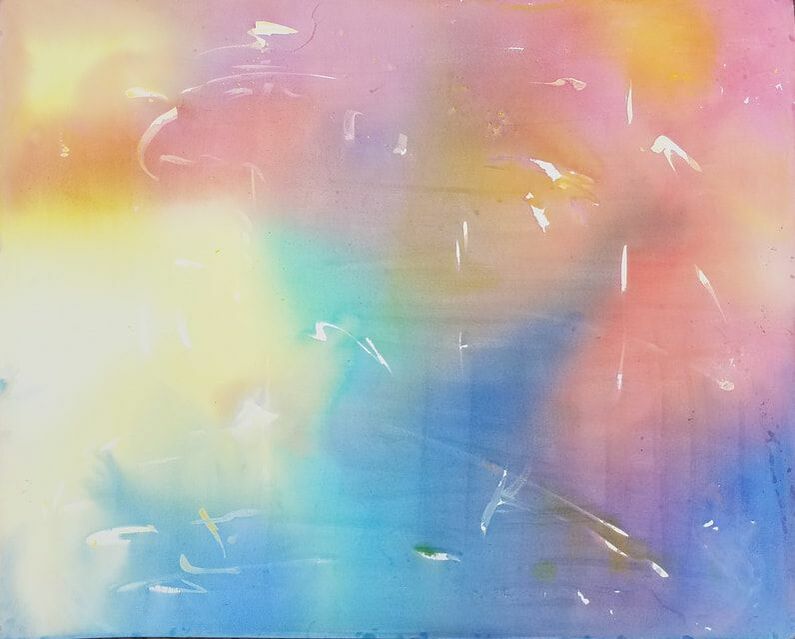
 RSS Feed
RSS Feed